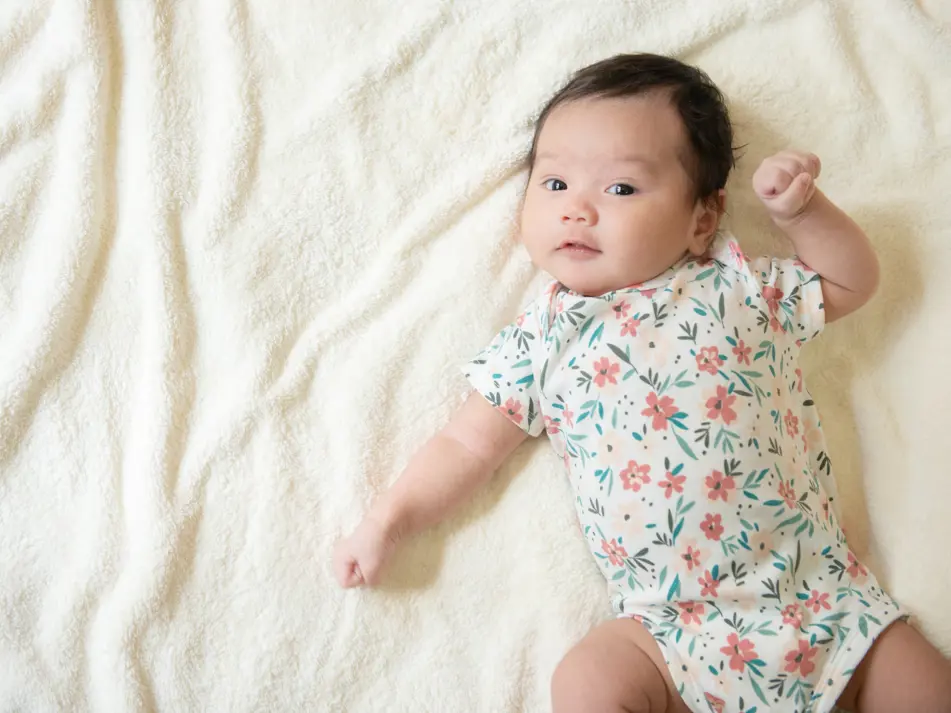Baby Weight

Regular monitoring of your baby’s physical growth will provide a record of the amazing level of physical growth that occurs during the first year of life. Weight is the most commonly used measure of growth and health.
However, avoid being too focused on the weight of your baby. Weight is only one measure of health.
Monitoring weight, length and head circumference
Weight, length and head circumference are three important areas of physical growth. Growth refers to an increase in size.
At birth, the head is approximately one-quarter of the baby’s total body length, while the legs only take-up one-third of the total body length.
By 12 months their length is more than 50% greater than at birth. By two years, a baby’s head accounts for one-fifth and their legs for nearly half of the total body length.
- A baby’s weight is usually done without clothing to ensure a consistent measurement, and using digital baby scales.
- Length is measured using a board.
- Head circumference is done with a paper tape measure (as a cloth measure can stretch with use). The nurse or doctor will place it around your baby’s head slightly above their eyebrows.
Baby head circumference
During the first two years, a baby’s head circumference will increase rapidly. This is due to the rapid growth in brain size during this period. A baby’s skull is structured to allow this growth.
At birth, the bones of the skull are separated by six sutures or gaps, and form two fontanelles or ‘soft spots’. The anterior fontanelle is on the top of the baby’s head and easily felt. It closes over by a baby’s second year of life.
The second smaller posterior fontanelle is at the back of the head and it closes more quickly. The sutures and fontanelles enable the bones of the skull to overlap during the birth process.
At first your baby’s head might appear misshapen; this usually improves within a few weeks.
General guidelines for normal baby weight
- Most babies lose up to 10% of their birth weight in the first week and regain this over the next few weeks.
- Birth weight often doubles by 4–6 months and triples by 12 months although this is impacted by many things including genetics.
- Birth length increases usually 1.5 times in 12 months.
- Birth head circumference usually increases by about 7.6 cm in 12 months.
Your child and family health nurse or doctor will monitor weight, length and head circumference changes on a regular basis, and record these in your baby’s personal health record on the supplied growth chart.
Weight, length and head circumference are plotted on a graph in order to determine your baby’s growth curve from one visit to the next. The growth chart has curved lines drawn on them that indicate a normal growth range – these are called percentiles bands.
These percentile bands range from the 3rd to 97th percentile. This means that a baby whose weight is on the 50th percentile is heavier than a baby on the 3rd percentile. Or a baby whose length is on the 97th percentile is longer than a baby on the 3rd percentile.
Be aware that growth charts are only a guide for parents and health professionals.
Baby weight percentiles
The preferred charts used for Australian babies have been developed by the World Health Organization (WHO). These charts are based on the growth of children ages 0 to 59 months living in environments believed to support optimal growth of children.
Measurements are done on a regular basis – more frequently in the early weeks of your baby’s life. The child and family health nurse will take your baby’s measurements at the first visit, and then at subsequent visits.
It's recommended that measurements are checked as per your baby’s personal health record, at 1 - 4 weeks, 6 - 8 weeks then at six months and 12 months (these times may vary slightly in different states) It may be more frequent if there have been growth or feeding monitoring requirements.
At these times, the child and family health nurse or your doctor will usually complete routine screening activities and ask you some questions to check on your baby’s development.
Many things including culture and genetics will govern the percentile your baby is on. Use these charts as guides only, as children grow at different rates.
You will notice over your baby’s first year that sometimes their weight does not increase, or may even decrease. Weight is influenced by so many things that are happening in your baby’s life. There are many short-term reasons why babies have periods where they slow down or don’t gain weight. For example, having a cold, weaning or starting a new childcare arrangement can all impact your baby’s ability to gain weight.
When further investigation is needed into newborn baby weight
Weight is an important measure for the status of your baby’s health. When your baby is assessed by your doctor or child and family health nurse, they will investigate further if your baby:
- Continues to lose weight after the first week of life.
- Does not regain their birth weight by around two weeks of age
- The growth chart is the health professional's preferred means of measuring growth however an expected guide is:
- Birth to 3 months: a gain of 150 - 200g a week.
- 3 - 6 months: a gain of 100 - 150g a week.
- 6 - 12 months: a gain of 70 - 90g a week.
- Their weight, when plotted on a growth chart, rapidly crosses percentile bands or goes above the 90th percentile or below the 10th percentile.






































